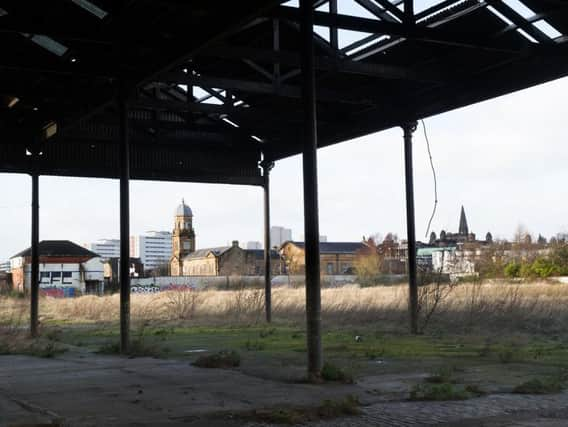Derelict land in Scotland could be used for new generation of allotments


Gap sites are described as a "persistent challenge" in Scotland but experts believe that bringing them back into use could help tackle social inequalities.
The Vacant and Derelict Land Taskforce was established last year by the Scottish Land Commission and SEPA and today called for a national focus to realise the opportunities of transforming gap sites.
Advertisement
Hide AdAdvertisement
Hide AdDecades of deindustrialisation means that almost one in three Scots currently lives within 550 yards of a derelict site - rising to 58 per cent in deprived communities.
More than 11,000 hectares of land is currently classed as disused and a coordinated approach could help prevent future sites from becoming abandoned.
One notorious gap site - the former Glasgow Meat Market in the city's east end - will finally be reused after plans were this week approved to build 252 homes on the land, which has lain empty for more than 30 years.
But Glasgow still has an above-average number of large vacant plots, including the Graving Docks complex opposite the Riverside Museum.
A report by the Commission examined the factors behind persistent 'stuck sites’ – usually larger areas which have been abandoned long-term.
It believes they could be used to build new homes to limit urban sprawl and reduce commuting, or to provide new allotments and city farms for fresh food grown locally.
They could also be used to create new parks and green spaces.
Hamish Trench, Scottish Land Commission Chief Executive, said: “Scotland has a legacy of ‘stuck sites’ with a majority in either current or former public sector ownership. We need to work together to put procedures in place to ensure that this legacy doesn’t continue.
Advertisement
Hide AdAdvertisement
Hide Ad“Transforming vacant and derelict sites opens up opportunities to promote inclusive growth and greater wellbeing, while tackling climate change. What’s clear is that this needs a national co-ordination to create the focus and changes needed."
Roseanna Cunningham, cabinet secretary for the environment, said: “Too much land in Scotland is currently unused. The Scottish Government recognises the huge opportunity that represents, and it’s our priority to ensure that as much of that land as possible is unlocked – acting as a catalyst for community and environmental regeneration.
“The taskforce was created to help realise that ambition and I welcome their report, which sets out in clear detail what must be done in order to make long term, sustainable change.”